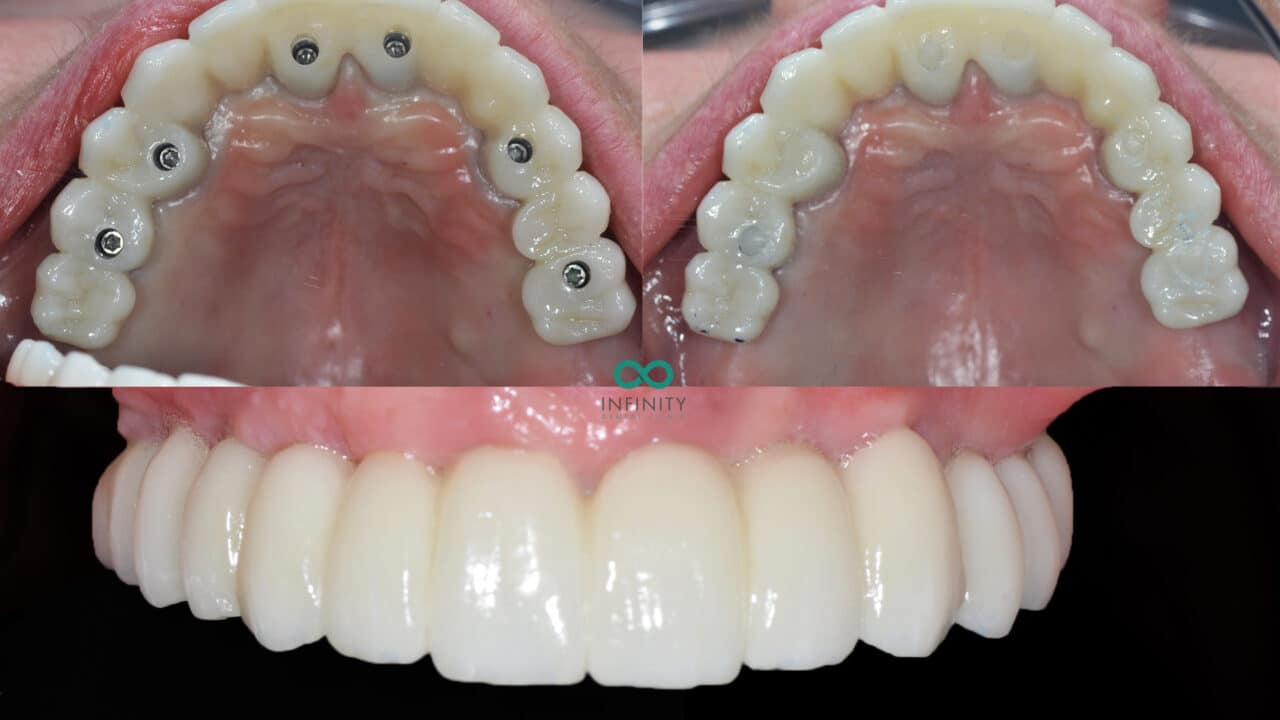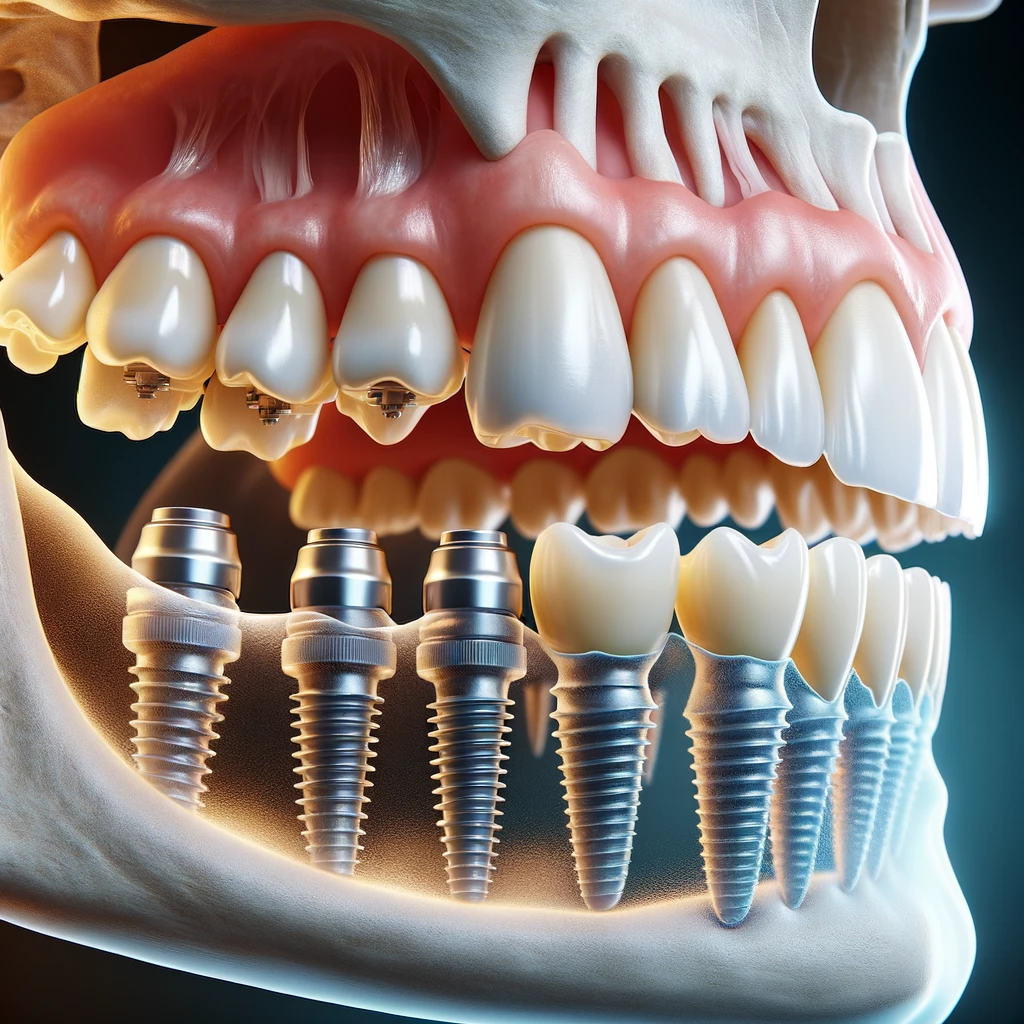Unknown Facts About Dental Sense
Table of ContentsHow Dental Sense can Save You Time, Stress, and Money.The Buzz on Dental SenseAn Unbiased View of Dental SenseThe Greatest Guide To Dental Sense
are medical tools operatively implanted into the jaw to restore a person's capability to eat or their look. They offer support for artificial (fake) teeth, such as crowns, bridges, or dentures. When a tooth is lost because of injury or condition, a person can experience issues such as fast bone loss, malfunctioning speech, or changes to eating patterns that cause pain.Oral dental implant systems are composed of an oral implant body and oral implant abutment and might additionally consist of an abutment fixation screw. Dental veneers cost. The dental implant body is operatively put in the jawbone instead of the tooth's origin. The dental implant abutment is generally connected to the dental implant body by the joint fixation screw and expands through periodontals into the mouth to support the attached man-made teeth
(https://canvas.instructure.com/eportfolios/3460980/home/transform-your-smile-with-wisdom-tooth-cavity-solutions-and-cosmetic-dentistry-services)Framework of The Oral Implant System selecting dental implants, talk with your dental service provider about the possible benefits and dangers, and whether you are a candidate for the treatment. Things to think about: Your general health and wellness is an important consider determining whether you are an excellent prospect for dental implants, for how long it will certainly require to recover, and exactly how long the implant may stay in area.
Smoking might affect the healing procedure and lower the long-lasting success of the implant. The healing process for the dental implant body may take numerous months or longer, throughout which time you commonly have a short-lived abutment instead of the tooth. the oral implant procedure: Carefully adhere to the oral health directions provided to you by your oral service provider.
Dental Sense for Beginners
Implant failure can cause the need for another surgery to repair or change the implant system. Restores the capacity to eat Recovers cosmetic appearance Aids maintain the jawbone from shrinking due to bone loss Maintains the health and wellness of the surrounding bone and periodontals Helps maintain nearby (close-by) teeth steady Boosts quality of life Damages to surrounding natural teeth during implant placement Injury to the surrounding cells during surgery, such as sinus perforation Injury throughout surgical treatment (for instance, crack of bordering jawbone) Insufficient function, such as seeming like the teeth do not bite with each other typically An experience that the tooth is loosened or turning in position arising from a joint screw loosening up Implant body failing (looseness of the implant body) as a result of systemic infection, which may be most likely in patients with unrestrained diabetes mellitus as a result of local infection in bone and gum tissues sustaining the dental implant body due to delayed healing, which might be more most likely in clients who smoke Problem cleaning the periodontals around the implant, resulting in bad dental hygiene Without treatment periodontal condition Post-surgical pins and needles as a result of nerve impingement or damage Always inform image source health care suppliers and imaging service technicians that you have oral implants prior to any type of magnetic resonance imaging (MRI) or x-ray treatments.
FDA is not mindful of any type of unfavorable events reported for MRI or x-ray treatments with dental implants. Oral implants systems are generally made from products that adhere to global agreement criteria of the International Organization for Standardization (ISO) or ASTM International. These criteria have information of what makes a safe product.

A dental implant is a structure that changes a missing tooth. With screw-like devices, the surgeon inserts an implant into the jawbone, and it acts as a support for a fabricated tooth, called a crown.
7 Simple Techniques For Dental Sense
Some people are not qualified for dental implant surgical procedure. It is for oral doctors to operate people with: acute illnessuncontrollable metabolic diseasebone or soft tissue illness or infectionIf these problems are fixed, an individual can have the surgery. In, oral cosmetic surgeons avoid running on individuals with: If individuals with any of the above go through oral implant surgical procedure, there is a higher risk of the implant failing.

Dental dental implant surgical procedure is a tailored process. It's not the exact same for everybody. However the following provides a general introduction of what you can expect your dental professional, dental doctor, periodontist or prosthodontist to do: Position the implant operatively. Give you time to recover. Attach the article and last crown, bridge or denture.
Next off, your doctor will thoroughly place the oral implant right into your jaw. If your implant is near the front of your mouth, your dental professional will certainly make a temporary tooth for you to use up until you recover.
Some Of Dental Sense
Your copyright can inform you what to anticipate in your scenario. Throughout the healing phase, your jawbone must fuse to the dental implant. This procedure, called osseointegration, is critical for security and lasting success. This procedure can take anywhere from three to nine months. Sometimes, it might take much longer.
Once your implant heals, your dentist can affix the abutment (little adapter blog post) and your final restoration (crown, bridge or denture). This usually takes concerning one hour to finish and might need a 2nd minor surgical procedure. You should not feel any type of pain during your dental implant procedure because your company will utilize medicine to numb your gum tissues.